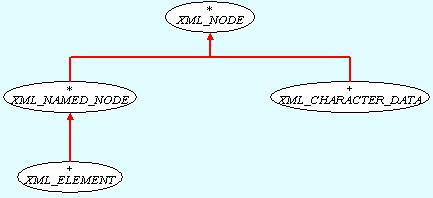
For the user of the library in most cases the tree based parser will be the better choice. For this reason I will limit the documentation on this topic for now. Objects of the type XML_TREE_PARSER can be feed with a XML document split up in one or more strings. The following example parsers a XML document that is stored completly in a string object of the name `buffer'.
.
.
.
local
parser: XML_TREE_PARSER
.
.
.
-- somewhere the parser must be created (:
!! parser.make
.
.
.
-- parse the XML-document
parser.parse_string (buffer)
-- and tell the parser that the end of the document has been reached
parser.set_end_of_file
if
not parser.is_correct
then
-- whoops! there was an error in the docment.
-- print out some information about that error
print ("%N")
print (parser.last_error_string)
print (" at ln: ")
print (parser.last_line_number)
print (", cl: ")
print (parser.last_column_number)
print ("%N")
else
-- the document was parsed successfully.
-- print out the structure of the document
print (parser.out)
end
The parser stores the information contained in the XML-document as a tree consisting of XML_NODES. The following is a inheritance graph of all nodes currently implemented.

The parser inheritance graph itself is presented in the next picture. You see that the tree parser not only inherits from the event based parser, but also from XML_DOCUMENT. Objects of the type XML_DOCUMENT represent a whole XML-document. They have a `root_element' of the type XML_ELEMENT and (in the future will) hold additional information given in the XML-document (i.e. the encoding)
